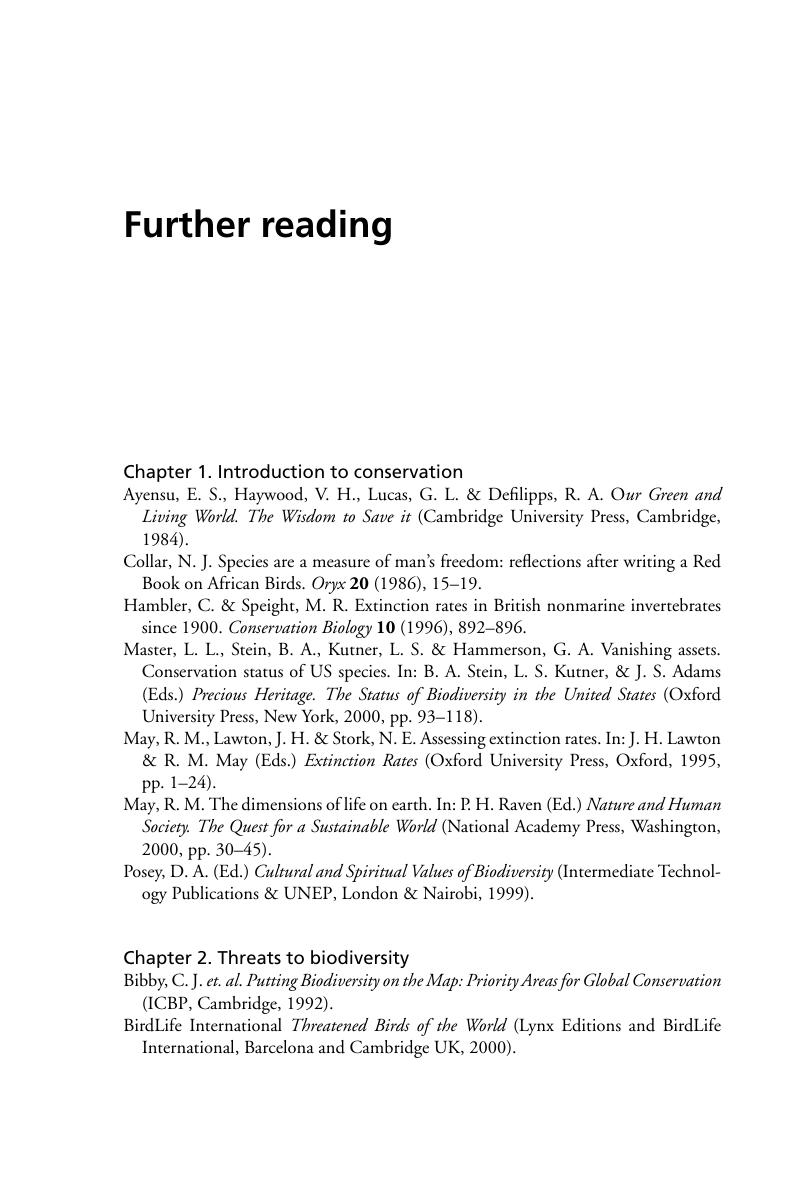Book contents
- Frontmatter
- Contents
- Preface
- 1 Introduction to conservation
- 2 Threats to biodiversity
- 3 Evaluation of priorities for species and habitats
- 4 Monitoring and Environmental Impact Assessment
- 5 Management of natural habitats
- 6 Management of species
- 7 Sustainability, and the management of semi-natural habitats
- 8 Restoration, translocation and mitigation
- 9 Environmental economics, law and education
- 10 Conclusions
- Further reading
- List of species names
- Index
- References
Further reading
Published online by Cambridge University Press: 05 June 2012
- Frontmatter
- Contents
- Preface
- 1 Introduction to conservation
- 2 Threats to biodiversity
- 3 Evaluation of priorities for species and habitats
- 4 Monitoring and Environmental Impact Assessment
- 5 Management of natural habitats
- 6 Management of species
- 7 Sustainability, and the management of semi-natural habitats
- 8 Restoration, translocation and mitigation
- 9 Environmental economics, law and education
- 10 Conclusions
- Further reading
- List of species names
- Index
- References
Summary

- Type
- Chapter
- Information
- Conservation , pp. 344 - 349Publisher: Cambridge University PressPrint publication year: 2004



